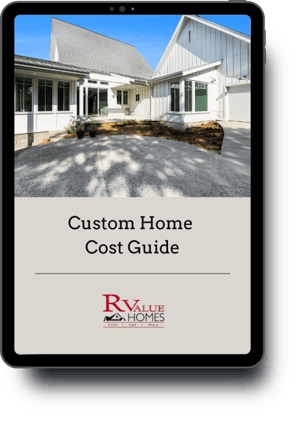6 Min Read
Key Considerations When Designing Your West Michigan Home
R-Value Homes works with people who care about comfort, durability, and doing things right the first time. Some are drawn to net-zero energy use. Others want a healthier indoor environment. Many just want to know their investment is going to last. We guide our clients through a design/build process that brings clarity to what matters and avoids the detours that lead to cost overruns and compromises. If you’re planning a custom home in Michigan, the best place to start is with a builder who helps you design smart from the start. Here’s what you need to know when designing your dream home.
Early Considerations for a Custom Home: The Power of a Thoughtful Start
It’s tempting to jump into floor plans and Pinterest boards, but the custom home building process works best when design starts with priorities, not just aesthetics. We’ve seen firsthand what happens when people design in a vacuum. A better path is to begin with a clear understanding of what matters most. Maybe that’s energy efficiency, aging in place, minimizing maintenance, or maximizing lake views.
Here’s just one example: recent clients came to us after spending over a year perfecting plans with an architect, without sharing their budget. The design was impressive, but once pricing came in, they realized they had created something they weren’t actually willing to pay for. It cost them time, energy, and momentum before they even got started.

How the Custom Home Process Works with R-Value
Designing and building a custom home doesn’t have to feel overwhelming. We guide you through every step, so your home reflects your goals, works with your site, and stays aligned with your budget from day one. Here’s what the process looks like with R-Value Homes.
- Discovery & Planning
We start with a conversation. What matters most to you? We also talk budget early to shape your vision within real, achievable parameters. - Preliminary Design
Our team explores your site, reviews zoning, and starts sketching concepts that match your needs. You'll see early layouts, elevations, and a first-round budget estimate based on real-world costs, not guesses. - Design & Pricing
We bring in specialists, interior designers, HVAC experts, and engineers as needed. This is where your home takes full shape. We finalize drawings, write detailed specifications, and help you select finishes. Then we price the project down to the nail. - Construction Agreement & Permits
Once you’re comfortable with the plans and pricing, we finalize the agreement and apply for permits. We schedule your build, introduce your project manager, and set expectations for communication and milestones. - Build & Follow-through
We manage the entire construction process, conduct regular walkthroughs, and maintain clear communication through our project management platform. You stay informed without being overwhelmed. - Support After Move-in
Once you're in your home, we stay involved. We offer a one-year walkthrough, warranty support, and long-term performance guidance.
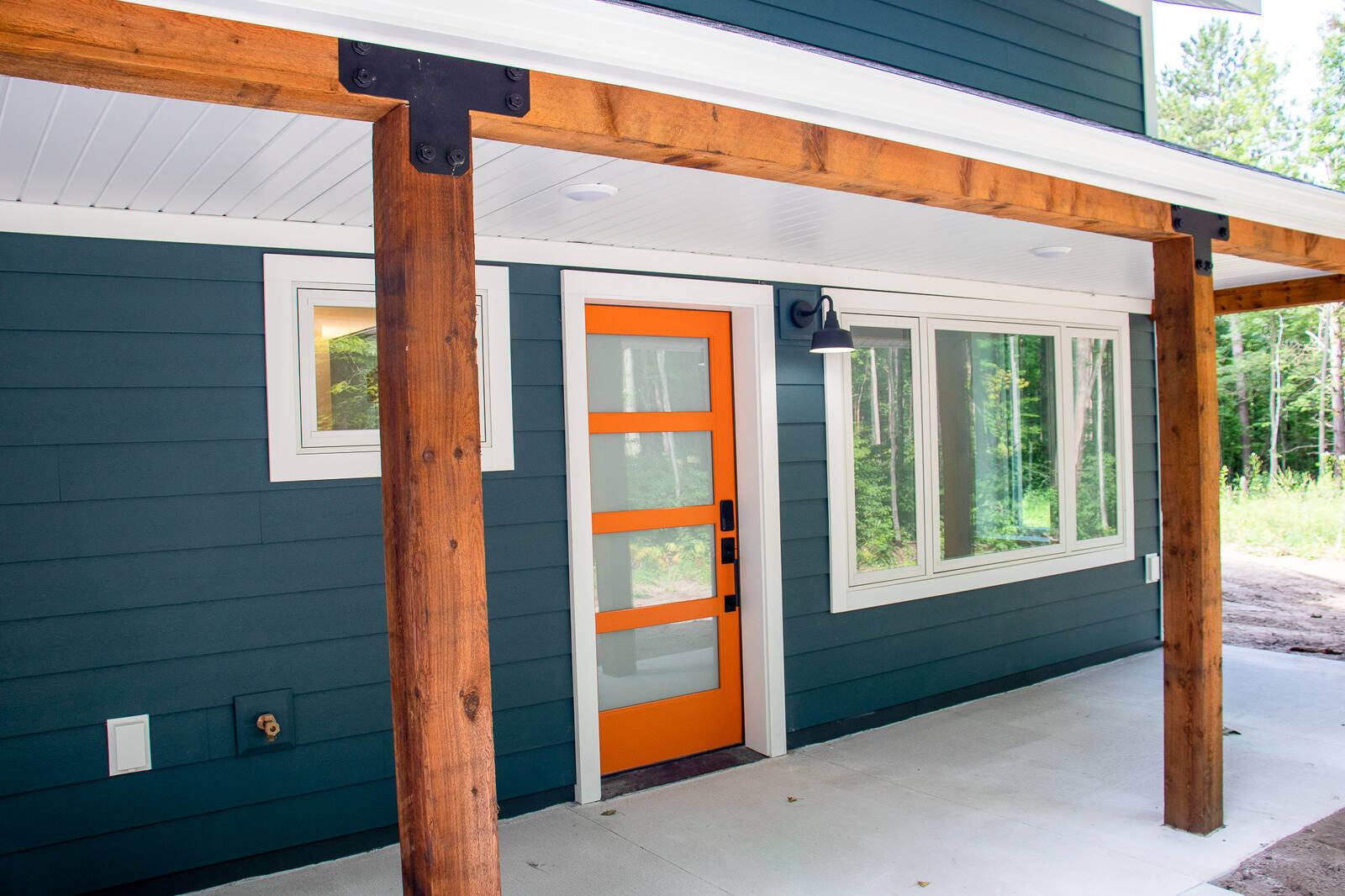
Here’s why R-Value Homes is the best. We had a minor HVAC issue last night at 9:00 pm. Called Jake, who built our house over 2 years ago. He said he could be out first thing in the morning. He was at our house right when he said he would be and fixed the issue in minutes. A few hours later, he sent us a follow-up email with 3 different options to make sure the issue doesn’t happen again. The service and professionalism is beyond expected and so appreciated. We can’t say enough good things about R-Value Homes!
Michael McCracken
Building a High-Performance Home: What That Really Means
We build high-performance homes because we care deeply about quality. “High-performance” gets thrown around a lot, but it isn’t just about slapping solar panels on the roof or stuffing extra insulation in the walls. It’s a systems-based approach to designing and building a home that performs better across the board, in terms of comfort, energy use, durability, and health. Your forever home deserves nothing less.
Whether we’re using ICF construction or traditional framing, these principles guide how we approach every home. They’re not add-ons or upgrades; they’re the foundation of how we think and build.
Airtight Construction
Controlling air movement is one of the most important ways to improve comfort and energy efficiency. An airtight home reduces drafts, stabilizes indoor temperatures, and prevents unwanted moisture intrusion.
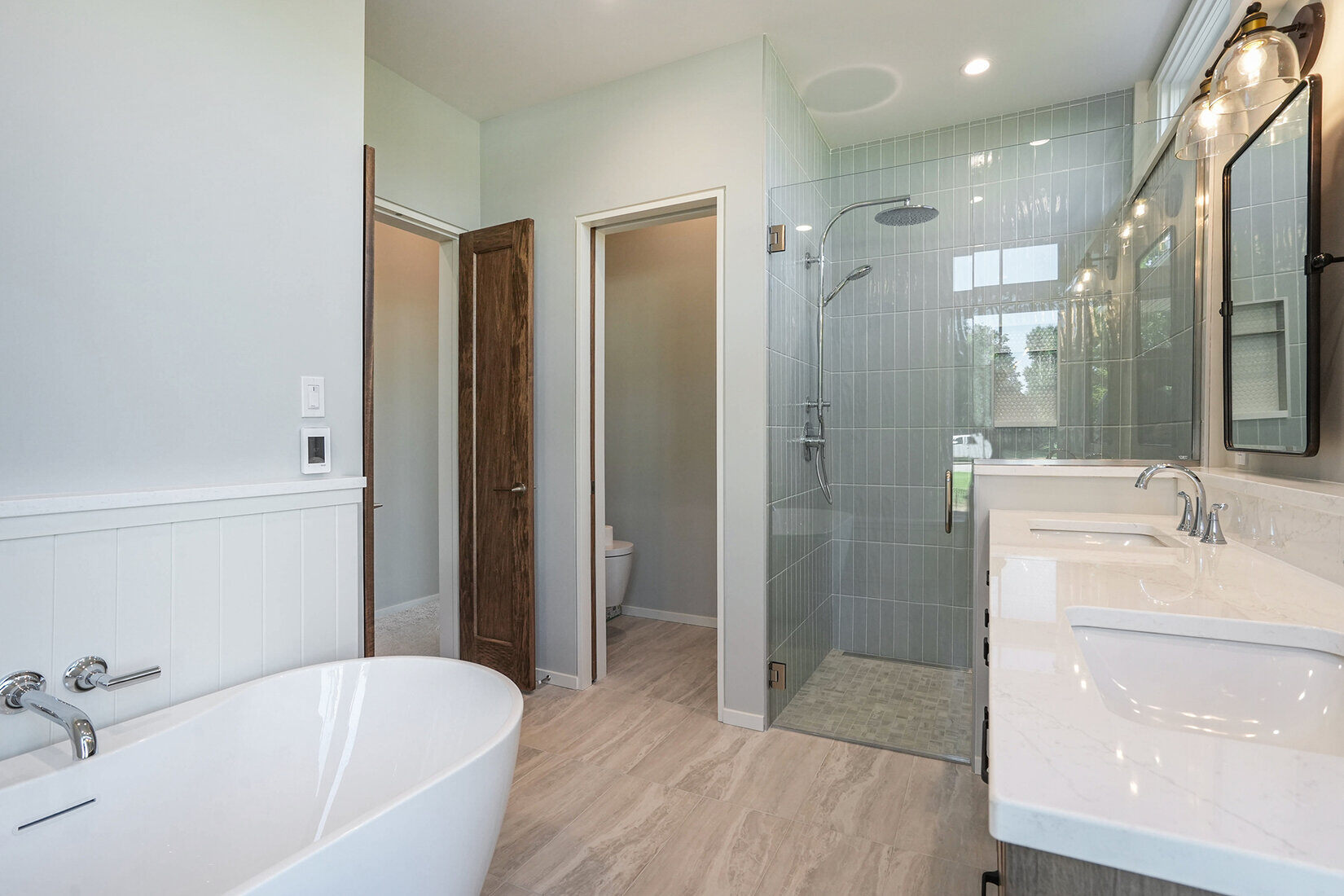
Balanced Ventilation
With less natural air leakage, mechanical ventilation becomes essential. Our intentional air exchange with HRVs (Heat Recovery Ventilators) or ERVs (Energy Recovery Ventilators) brings in fresh air, removes stale air, and maintains healthy humidity levels, especially critical in Michigan’s humid summers and dry winters to prevent mold and dry air symptoms.
Smarter Heating and Cooling
Oversized HVAC systems waste energy and underperform. We use load calculations and efficient layouts to ensure systems are right-sized and ductwork is thoughtfully routed. A story that sticks with us: a recent original design left no room for duct runs in some key spaces. We caught it early and adjusted the layout, which not only solved the issue but actually improved the flow of the home.
Verified Results
Every R-Value home is blower-door tested and third-party rated. Most fall into the top 2% of new homes in West Michigan. We build beyond code to a measurable performance standard.
Comfort and Health Are the Real Luxury Features
While some people obsess over finishes, we start with how the home feels. Is the air fresh? Are the floors warm? Do you notice the traffic outside or not at all? These are the things that make a house feel good to live in. Here’s how we build comfort and health into every project.
Thermal Comfort
Insulation only works if it’s installed properly and paired with airtight construction. We go beyond code minimums to ensure consistent temperatures across every room. No cold corners or stuffy upstairs bedrooms.
Acoustic Performance
ICF homes are naturally quieter thanks to the density of concrete walls. Even in stick-built homes, we consider things like room placement, soundproofing materials, and duct design to create peaceful, private spaces.
Indoor Air Quality
We choose low-VOC materials, design for proper airflow, and use filtered ventilation systems. In homes with radiant floors or polished concrete, we also eliminate common allergens like carpet dust or mold-prone subfloors.
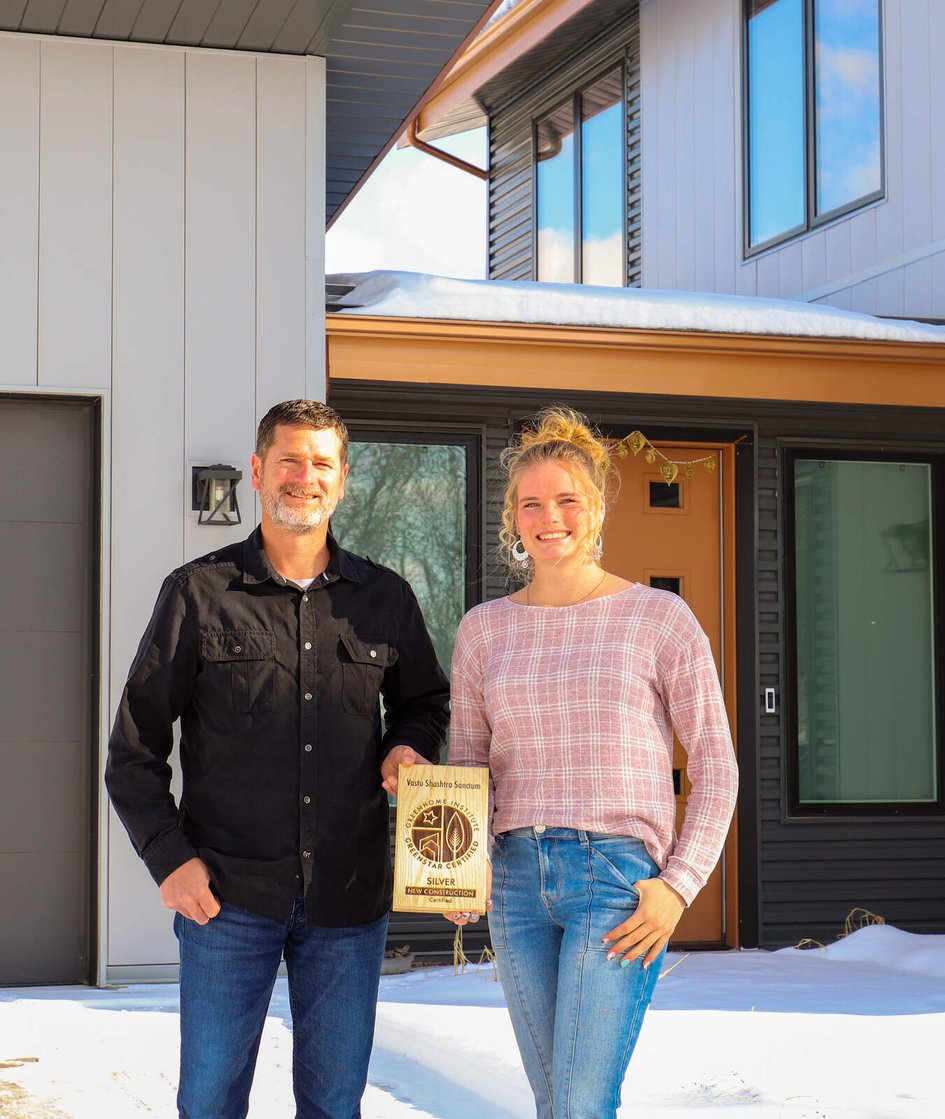
FAQ: What People Ask Before Building a Custom Home
Of course, every project sparks a few big questions. Here are the ones we hear most often and how we answer them.
Where do I start when building a custom home?
Start by identifying your goals in multiple domains like performance, budget, size, lifestyle needs, and then connect with a builder who can help you align those goals with a smart design. Taking the time to look at how to choose the right home builder in West Michigan can make the difference between a smooth process and one filled with surprises. Working with a design/build team like R-Value Homes helps you avoid delays and budget misfires. We bring cost, comfort, and construction realities into focus from day one.
How do I know if I can build on the land I own?
Zoning, setbacks, topography, utilities, and soil conditions all come into play. Our process includes a thorough site evaluation early on, so before you commit to a design, you’ll know what’s possible, what needs adjustment, and how to move forward without delay or redesign.
Can I build a high-performance home with a stock or online blueprint?
Maybe, but it will need work. Most online plans aren’t optimized for Michigan’s climate or ICF construction, and many are overloaded with features that drive up cost. We’ve successfully converted online prints into beautiful, high-performance homes, but only with design edits, system coordination, and careful budgeting.
Do I have to use ICF?
Nope! We also build high-performance homes using traditional framing. But ICF (Insulated Concrete Forms) offers serious advantages: quieter interiors, lower energy use, extreme durability, and better moisture control. We’re one of the few ICF home builders in Michigan with the depth of experience to do it right.
How much design flexibility do I have if I work with R-Value Homes?
All the flexibility you need. We offer full design/build services and also collaborate with outside architects and designers. We focus on aligning your design with performance goals and budget from the beginning, not forcing you into a one-size-fits-all plan.
How long does it take to design and build a custom home?
Most of our projects take 9–14 months from design kickoff to move-in, depending on complexity, permitting, and selections. We prioritize clear communication, realistic timelines, and proactive scheduling to keep things moving without rushing the important decisions.

What does it cost to build a custom home in West Michigan?
Our homes typically range from $600K to $2M+, depending on size, features, location, and performance goals. We’ll help you clarify what’s possible within your budget and make informed choices along the way.
What makes R-Value Homes different from other Grand Rapids custom home builders?
We specialize in high-performance construction, homes that are measurably better in comfort, health, and energy use. We’re also process-driven, transparent, and deeply collaborative. Whether you’re starting from scratch or already working with an architect, we’ll help guide your project toward something that lasts and lives better.
Ready to Design an Energy-efficient Custom Home in West Michigan?
R-Value Homes combines deep building science expertise with a design/build process that keeps you in control and confident at every step. We serve homeowners throughout Grand Rapids, Holland, Ada, Rockford, and beyond, people who want more than just a house.
If that sounds like you, we’re ready when you are. We’d love the opportunity to prove to you that your dream is in the best possible hands with us. Schedule a consultation today!
